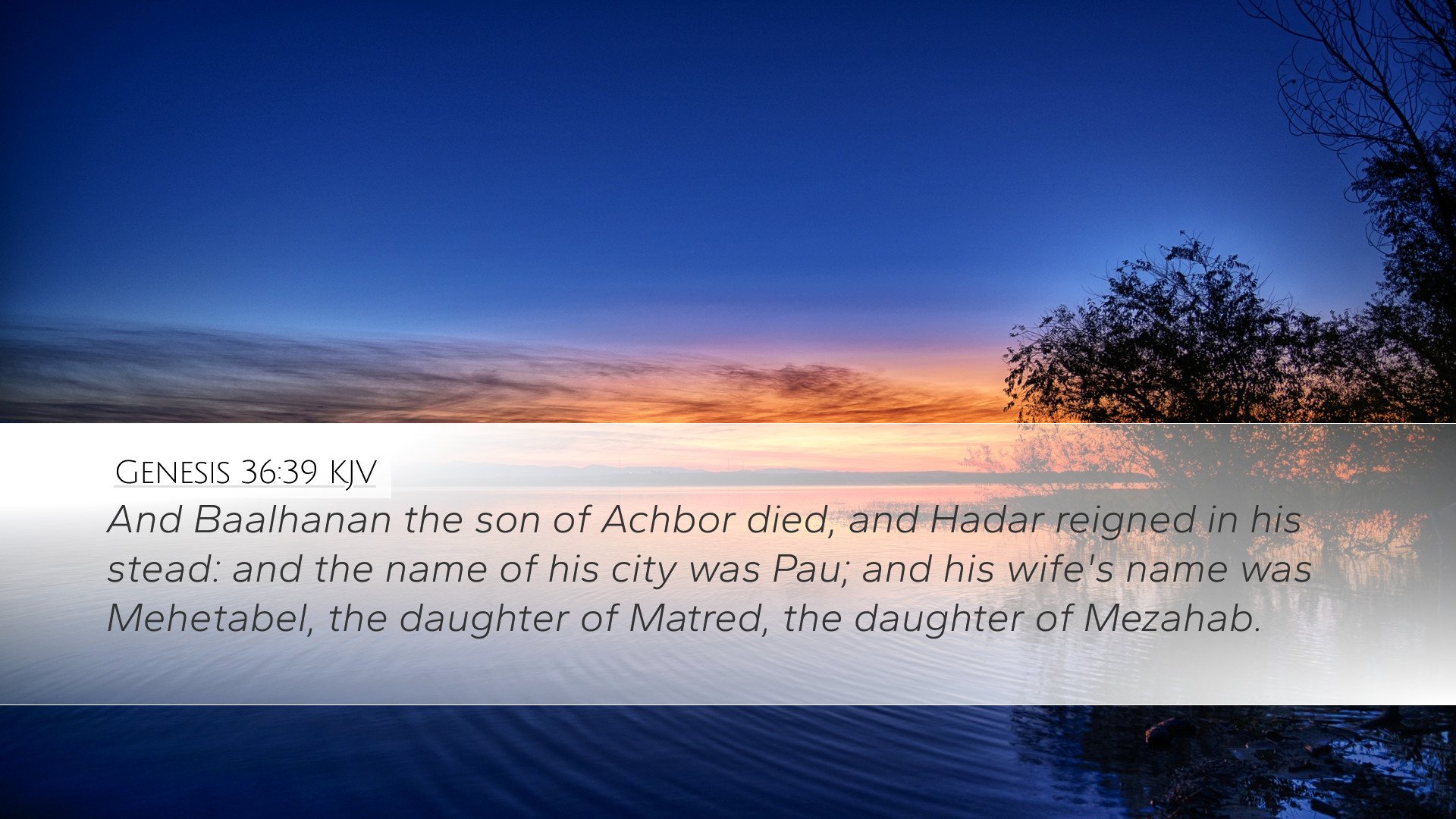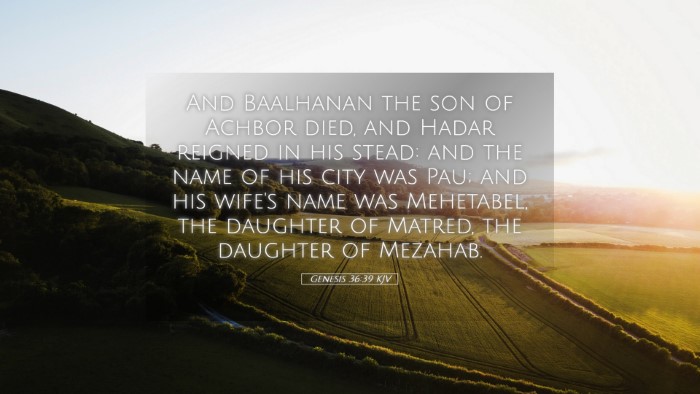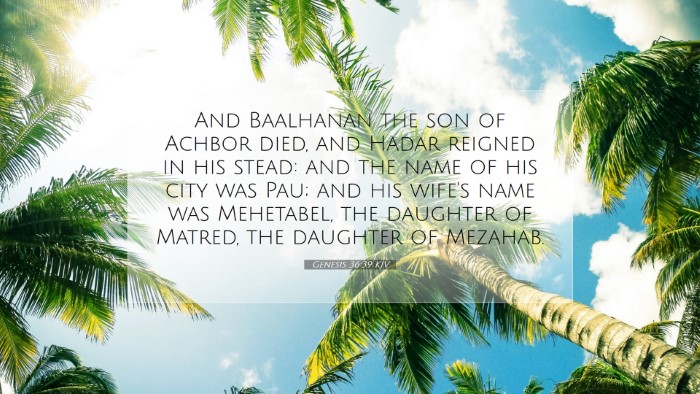Commentary on Genesis 36:39
Verse Text: "And Baal-hanan the son of Achbor died; and Hadar reigned in his stead: and the name of his city was Pau; and his wife's name was Mehetabel, the daughter of Matred, the daughter of Mezahab."
Introduction
This verse is part of a genealogical account detailing the descendants of Esau, the brother of Jacob, tracing the line of the Edomites. It emphasizes the reality of mortality and succession among rulers within the Edomite lineage. The transition noted here from Baal-hanan to Hadar stands as a reminder of the fragility of earthly power and the divine sovereignty that orchestrates the rise and fall of leaders.
Insights from Matthew Henry
Historical Context: Matthew Henry highlights the historical significance of this verse within the broader narrative of Genesis. He notes that the listing of rulers signifies the formation of Edom as a nation and its separation from Israel. This emphasizes the ongoing plan of God concerning the descendants of Jacob and Esau.
Mortal Leadership: Henry notes that Baal-hanan's death serves as a potent reminder of the transient nature of human life. Leadership, though often desirable, is not exempt from the inevitability of death. Through the change of rulers, he underscores that God's purposes continue unaffected by human mortality.
Insights from Albert Barnes
Understanding the Names: Albert Barnes expands on the names presented in this verse. He points out that the name "Hadar" implies "glory" or "splendor," suggesting an elevation in reputation following Baal-hanan's death. The affinity and attributes encapsulated in the names signify character and lineage; thus, tracing divine providence through human history.
Royal Transition: Barnes elaborates on the political implications of this transition. He suggests that the succession of Hadar after Baal-hanan illustrates the continuance of governance and civil order despite the personal demise of leaders. Each ruler carries the legacy of their predecessor while establishing their own reign.
Insights from Adam Clarke
Geographical Considerations: Adam Clarke provides a geographical analysis of Pau, the city named in this context. He emphasizes the possible locations of ancient cities and reflects on how the settlements of Edom can be seen as the foundation for future geopolitical dynamics in the region. This awareness of geography is essential for understanding the biblical narrative and its implications.
Women’s Influence in Context: Clarke also draws attention to Mehetabel, the wife of Hadar. He emphasizes the importance of women in biblical genealogies, often overlooked in the patriarchal society of the time. Her lineage, traced back to Matred and Mezahab, reflects the interconnectedness of families and the role women played in shaping the social fabric of their communities.
Theological Reflections
This verse opens avenues for deeper theological reflection on God's providence and the unfolding of His plans through seemingly mundane historical details. The fragile human institutions that set up rulers may shift over generations, but God's overarching sovereignty remains constant. Each ruler mentioned indicates not only a physical reign but the spiritual fight for recognition of God's ultimate authority.
Applications for Pastors and Theologians
Divine Sovereignty and Human Leadership: Pastors may draw parallels from this passage to illustrate the significance of relying on God as the ultimate ruler. It is a call to acknowledge that while leaders may come and go, God's plans in history prevail. Leaders are tasked to be stewards of their position, resembling Hadar's assumption of authority.
Legacy and Influence: The acknowledgment of Mehetabel as a prominent figure also serves as a reminder of the often-overlooked influence that individuals, particularly women, have had in shaping faith communities. It invites a re-examination of the roles of women in ministry and leadership today.
Mortality's Reminder: The mortality of Baal-hanan serves as a poignant reminder for congregations of the imperative to prepare for the end of life, to consider their legacy, and the importance of living a life that honors God’s calling in their temporal reign.
Conclusion
Genesis 36:39 encapsulates a significant moment in the narrative of Esau's lineage. Through the transition of leadership from Baal-hanan to Hadar, we are reminded of the divine weaving of human history, the interplay of life and death in leadership, and the need to focus on God's eternal kingdom. As leaders in faith communities study this passage, they are encouraged to reflect on the lessons of succession, the relevance of women in scripture, and their own call to faithful stewardship.


